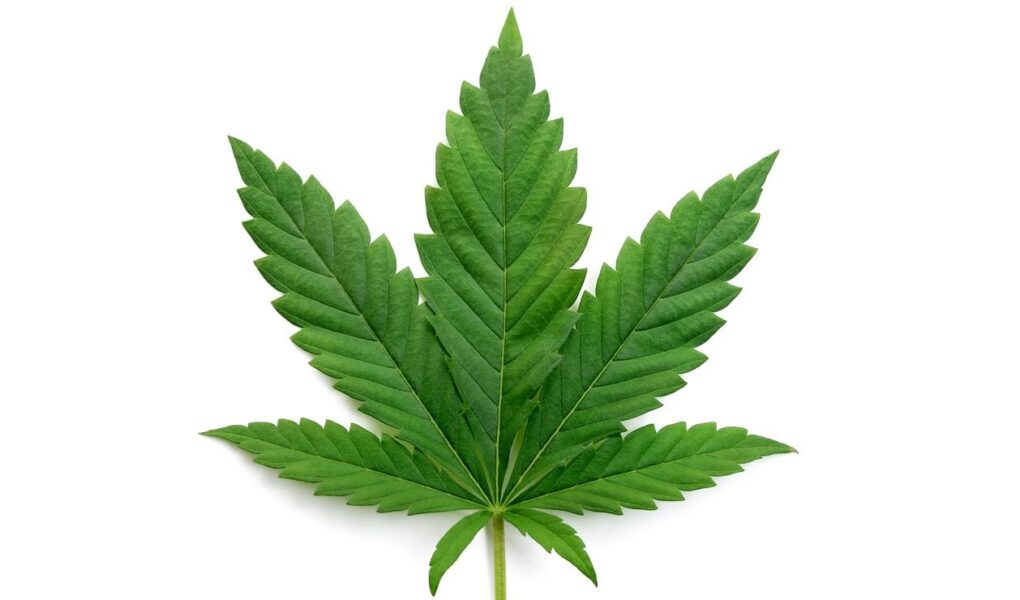In the ever-evolving landscape of health and wellness, few topics stir debate quite like marijuana. Once relegated to the shadows of society, this green plant has surged into the limelight, igniting passionate conversations about its legality, medicinal properties, and its place in our culture. But as discussions unfold, a fundamental question persists: Is marijuana really a drug? To some, it embodies a pathway to relief and relaxation, while others view it through a lens of caution and concern. As we delve into the scientific, social, and historical dimensions of cannabis, we aim to untangle the complexities surrounding its classification and impact, inviting you to reconsider what it truly means to label something as a drug in today’s world. Join us as we navigate this intricate terrain and seek a clearer understanding of marijuana’s role in our lives.
Table of Contents
- Understanding the Scientific Definition of Drugs
- Exploring the Therapeutic Benefits and Risks of Marijuana
- Cultural Perspectives on Marijuana and Its Classification
- Navigating Legal and Social Implications of Marijuana Use
- Q&A
- In Retrospect
Understanding the Scientific Definition of Drugs
To grasp whether marijuana qualifies as a drug, it’s essential to first understand what constitutes a drug scientifically. A drug is generally defined as any substance that, when introduced into the body, causes a change in physiological or psychological functions. This includes various types of substances, from prescription medications to recreational chemicals. The distinction lies not only in the substance’s ability to alter bodily functions but also in how it is used and regulated. Common characteristics of drugs include:
- Psychoactive Effects: They can influence mood, perception, and cognition.
- Potential for Dependency: Certain substances may lead to psychological or physical reliance.
- Legal Status: Drugs are often categorized based on legal restrictions and regulations.
When we specifically consider marijuana, its classification as a drug can be complex. Cannabis contains psychoactive compounds such as THC (tetrahydrocannabinol) that induce varying effects on the user. These effects can include relaxation, altered sensory perception, and an increase in appetite, which aligns with the broad definition of a drug. Additionally, marijuana is recognized both as a medicinal and recreational substance in different jurisdictions, leading to it being perceived in diverse ways. To clarify this further, here’s a simple comparison:
| Aspect | Marijuana | Typical Medications |
|---|---|---|
| Psychoactive Component | Yes (THC) | Varies |
| Regulation | Varies by region | Highly regulated |
| Purpose of Use | Recreational/Medicinal | Treatment of conditions |
Exploring the Therapeutic Benefits and Risks of Marijuana
Marijuana, often hailed for its therapeutic properties, offers a range of benefits that have piqued the interest of the medical community and patients alike. Pain relief, anxiety reduction, and appetite stimulation are among the most recognized advantages. Some studies indicate that cannabis can effectively manage chronic pain conditions, making it a potential alternative to traditional pharmaceuticals. Additionally, patients undergoing treatments such as chemotherapy may find that marijuana helps alleviate nausea and enhances their appetite, contributing to a better quality of life during challenging times.
However, the use of marijuana is not without its risks. Cognitive impairment, addiction potential, and psychotic episodes are significant concerns associated with its consumption. While many users may enjoy the benefits, there is a delicate balance to be struck between therapeutic use and the potential for adverse effects. A clearer understanding of individual responses to marijuana is crucial, as the spectrum of effects can vary widely among users. Below is a concise overview of both benefits and risks:
| Benefits | Risks |
|---|---|
| Pain relief | Cognitive impairment |
| Anxiety reduction | Addiction potential |
| Appetite stimulation | Psychotic episodes |
Cultural Perspectives on Marijuana and Its Classification
Throughout history, marijuana has been viewed through various cultural lenses, creating a tapestry of beliefs and practices surrounding its use. In many societies, it is revered not just as a plant but as a means of connecting to spirituality and tradition. For instance, in parts of Africa and South America, marijuana is traditionally used in religious ceremonies and social gatherings, symbolizing communal bonding. In contrast, certain Western cultures have historically classified it predominantly as a recreational substance, linked to counterculture movements. This dichotomy influences public perception and policy, making the discourse around marijuana particularly complex.
The classification of marijuana as a drug often hinges on social constructs more than scientific evidence. In some regions, marijuana is labeled as a narcotic, associated with criminalization and stigma, while other places embrace it as a legitimate therapy option. This inconsistency can lead to misunderstandings and misinformation about its effects and potential benefits. The following table summarizes different cultural attitudes toward marijuana across various parts of the world:
| Region | Attitude Toward Marijuana | Usage Context |
|---|---|---|
| Africa | Spiritual & Traditional | Ceremonies, Social Rituals |
| South America | Cultural Heritage | Festivals, Healing Practices |
| North America | Divided: Stigmatized vs. Medical | Recreational, Medical Use |
| Europe | Varied Acceptance | Medical, Recreational |
Navigating Legal and Social Implications of Marijuana Use
The landscape surrounding marijuana use is ever-evolving, marked by a complex interplay of legal frameworks and societal perceptions. As various jurisdictions across the globe transition toward legalization or decriminalization, the legal status of cannabis continues to shift, reflecting greater acceptance. This changing tide compels individuals to consider not only the potential benefits of marijuana but also the associated responsibilities and risks. It raises essential questions about public safety, law enforcement practices, and the regulation of marijuana production and sales. Furthermore, the normalization of marijuana prompts a broader societal dialogue about its role in our communities, often overshadowing the historical stigmatization that still lingers.
As stakeholders navigate these tumultuous waters, several factors come into play, influencing both policy and public opinion:
- Public Health: Examination of the long-term effects of marijuana on health and well-being.
- Economic Impact: Analysis of how legalization can affect job creation, tax revenue, and public funding.
- Criminal Justice Reform: Discussion of the implications for those previously incarcerated for non-violent marijuana offenses.
- Social Equity: Strategies to address disparities in marijuana-related arrests and prosecutions among different communities.
To better understand the implications of marijuana use in contemporary society, consider the following table that encapsulates different perspectives on marijuana legalization:
| Perspective | Pros | Cons |
|---|---|---|
| Legalization Advocates | Regulation leads to safer products and increased tax revenue. | Potential increase in use among minors. |
| Public Health Officials | Focus on harm reduction strategies and education. | Need for robust research on health impacts. |
| Law Enforcement | Reduces burden on the justice system. | Challenges in enforcing regulations. |
Q&A
Q&A: Is Marijuana Really a Drug?
Q1: What exactly is marijuana?
A1: Marijuana, scientifically known as Cannabis sativa, is a plant that contains various compounds called cannabinoids. The most well-known of these are delta-9-tetrahydrocannabinol (THC) and cannabidiol (CBD). While commonly associated with recreational use, marijuana has also been utilized for medicinal purposes throughout history.
Q2: Why do some people debate whether marijuana is a drug or not?
A2: The debate often stems from the varying perceptions of marijuana in society. Some see it purely as a recreational substance, likening it to alcohol, while others recognize its medicinal properties. This dichotomy leads to discussions about classification—whether to consider its effects, its legal status, or the context in which it’s used.
Q3: How do researchers define a drug?
A3: In scientific terms, a drug is any substance that alters the body’s normal functions. This includes effects on mood, perception, cognition, and physiological processes. By this definition, marijuana qualifies as a drug since it can induce a range of effects on the brain and body.
Q4: What are the positive effects of marijuana?
A4: Users report various potential benefits, such as pain relief, reduced anxiety, increased appetite, and improved sleep quality. These effects have made marijuana a focal point in discussions around pain management and mental health treatment, garnering attention from both the medical community and patients alike.
Q5: Are there negative effects associated with marijuana use?
A5: Yes, like any drug, marijuana can have adverse effects. These may include impaired cognitive functions, addiction potential, anxiety, and respiratory issues when smoked. The degree of these effects can vary based on an individual’s biology, the strain of marijuana, and the method of consumption.
Q6: Does marijuana fit the definition of a “controlled substance”?
A6: Marijuana’s classification as a controlled substance depends on the legal framework of a given country or state. In many places, it falls under stringent regulations due to concerns about its potential for abuse and the health implications of use. However, some jurisdictions have legalized it for recreational and medicinal purposes, challenging its status in the eyes of the law.
Q7: What role do personal experiences play in the perception of marijuana?
A7: Personal experiences significantly shape how individuals view marijuana. For some, it is associated with relaxation and social enjoyment; for others, it may be linked to negative consequences. These perspectives contribute to the broader cultural conversation about its status as a drug and its place in society.
Q8: What’s the current scientific stance on marijuana?
A8: Scientific research is increasingly recognizing marijuana’s complexity. Despite its legal and social controversies, studies continue to explore its potential therapeutic benefits and risks. The growing body of evidence prompts an evolving understanding of marijuana’s role as a drug—both in medicine and society at large.
Q9: So, is marijuana really a drug?
A9: Yes, marijuana is classified as a drug based on its ability to alter mental and physical functions. However, the conversation surrounding its use is multifaceted, influenced by cultural, legal, and personal contexts. As research progresses, our understanding of marijuana’s benefits, risks, and societal implications will undoubtedly continue to evolve.
In Retrospect
In the swirling haze of debate surrounding marijuana, the question of whether it is truly a drug invites exploration beyond mere labels. As we have navigated through its historical context, cultural significance, and the evolving scientific understanding, it becomes evident that the answer may lie in the eye of the beholder. For some, marijuana symbolizes liberation—a natural remedy that offers relief and refuge. For others, it represents a substance fraught with cautionary tales and regulatory concerns.
Ultimately, the classification of marijuana as a ”drug” is as complex as the myriad compounds it contains, each with its own potential effects and implications. As society continues to grapple with its impact—both positive and negative—it is crucial to approach this topic with an open mind and a commitment to informed dialogue. Whether viewed as a medicinal ally or a recreational indulgence, marijuana challenges us to rethink our assumptions about substances, perception, and health.
In closing, as we journey toward a deeper understanding of marijuana and its role in our lives, let us embrace the nuances that define this conversation. After all, clarity often emerges from the clouds of complexity, inviting us to engage thoughtfully with one of the most intriguing plants of our time.


